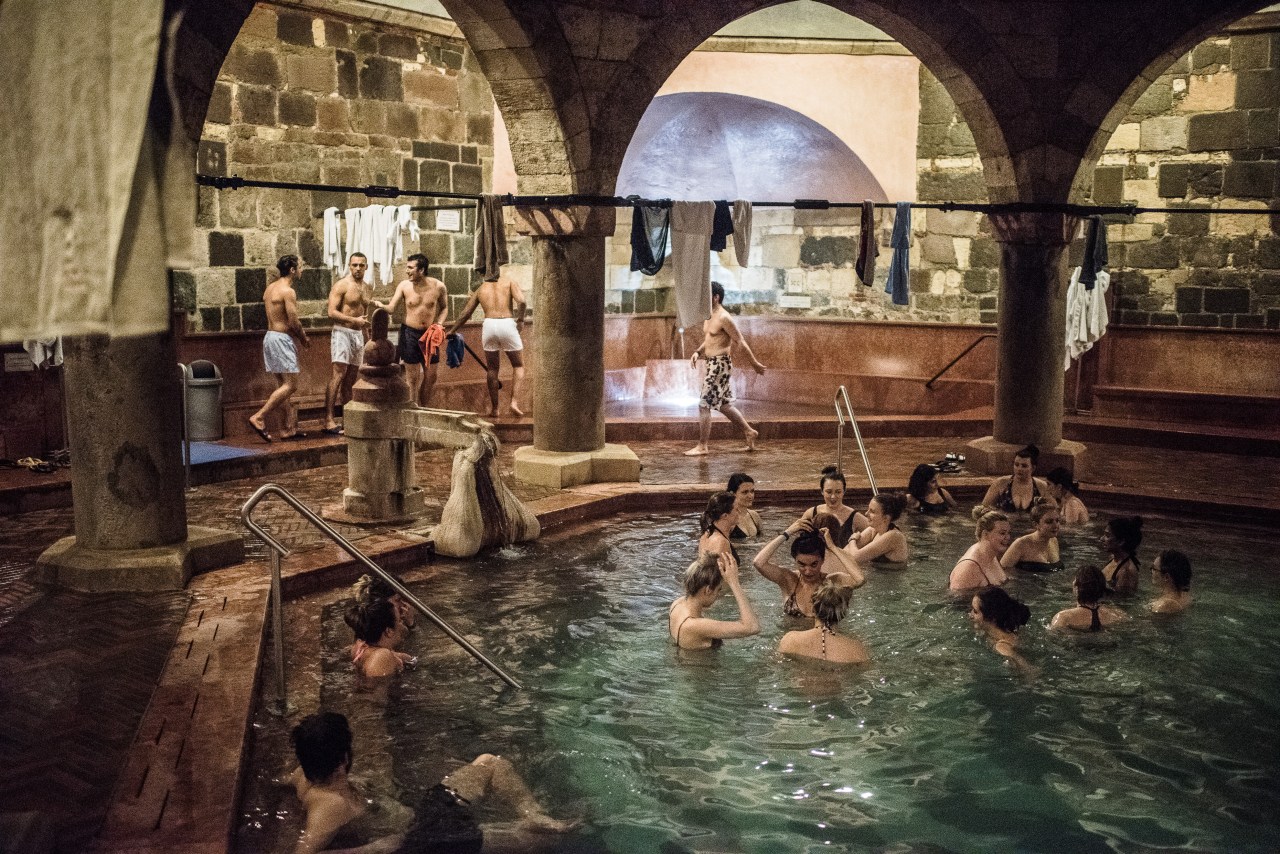Budapest is famous for its stunning skyline. Its two sides, Buda and Pest, straddle the silver swath of the Danube, coming together at the picturesque city center.
But it’s also known for bargain booze, quirky “ruin bars,” and the pillars of a growing party district. In this most central part of the city, beer, bikes, and bachelor parties have residents pleading for quiet, and the growing crowds have sent locals—and some visitors—elsewhere.
Here’s how to navigate the city. Start with some classic Budapest, and then sample the newer trends that visitors seek out today.

Budapest endured two wars and an uprising in the 20th century and yet managed to preserve its remarkably homogeneous city center, where the architecture dates mostly from the 19th century. It has often served as the backdrop for foreign movies, taking on the role of other European capitals.
Gerlóczy Cafe, which played a Parisian bistro in Steven Spielberg’s Munich, offers a menu and atmosphere inspired by Budapest’s prewar cafe culture. It’s around the corner from the historic site that was once Pilvax, a cafe where the poet Sandor Petofi and other young intellectuals started the 1848 uprising against Habsburg rule. Today, Pilvax Bistro stands in its place.
Order the Hungarian omelet, also known as “peasant-style eggs,” for it contains the best of the Hungarian countryside: sausages, onions, hot green peppers, and bacon. It will equip you for the long walk that begins just a few steps away.
If you’ve ever received a postcard from Budapest, chances are you’ve seen the rolling hills of Buda on one side and flat Pest reaching for the horizon on the other, divided by the Danube.
Head west from Gerlóczy to the banks of the Danube and then north along the river. You’ll spot the Liberty Statue across the river and high above the city. It’s known locally as “the bottle opener” and was erected after World War II to celebrate the liberation of Hungary by Soviet troops. The Soviet soldier, which once stood at the foot of the female figure, was moved to Memento Park, on the outskirts of the city, along with other unwanted relics of communist Hungary.
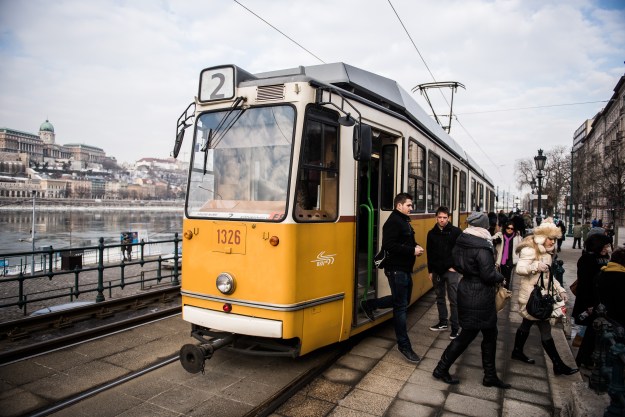
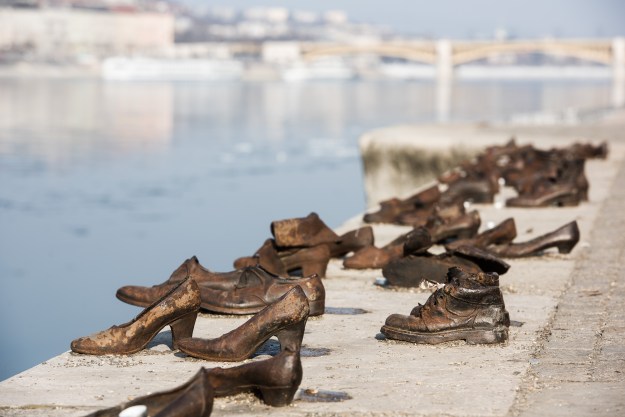
Look for the Castle District, perched on a hill, and the Chain Bridge, the city’s oldest. Walking past the bridge and along the edge of the embankment you’ll stumble on the Shoes on the Danube, a moving memorial of iron shoes to Hungarian Jews who were shot into the river by fascist militiamen in the winter of 1944–45.
Yellow trams are a symbol of Budapest and run on an extensive network. Take advantage of tram No. 2, which runs along the river, if you’d rather ride than walk. Get off at Kossuth Square, where the tram takes a sharp turn away from the Danube. You can walk almost right up to the country’s neogothic parliament building, which stands on a large square, made visitor friendly in a recent upgrade. The ornate structure looks robust, but its limestone is vulnerable to the elements. Decades of renovation have restored its original, shining-white splendor. Now that the scaffolding and coat of gray are shed, you can walk around the piazza in front and admire the architectural details up close.
People in Budapest like their piac (market halls), once the main source of fresh produce in the city. Farmers’ stalls are rare today, but the markets have preserved the specific street foods they specialize in: sausages, stews, and sour pickled vegetables. Patrons usually eat while standing at the stalls.
The Hold utca (street), or Downtown market hall, was refurbished in 2014, and its growing number of vendors keeps up with the trend of locally sourced produce and street food.
In the upper-floor food court, try Lakatos Muhely (The Locksmith) for creative sausage flavors, all gluten and dairy free. On your way out, take a look at the stalls selling sweet or spicy (edes or eros) red paprika, goose liver foie gras, Hungarian sausages, and salami—Budapest’s best souvenirs.
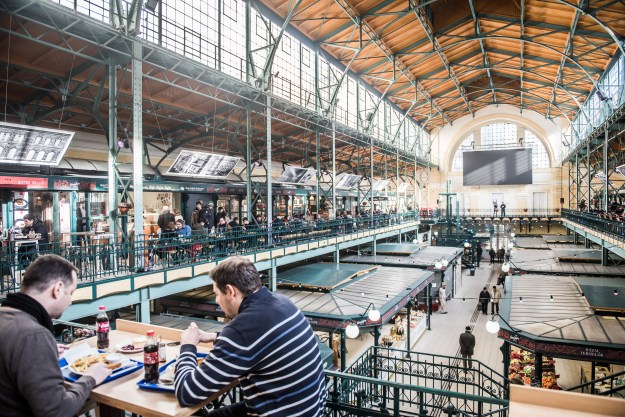
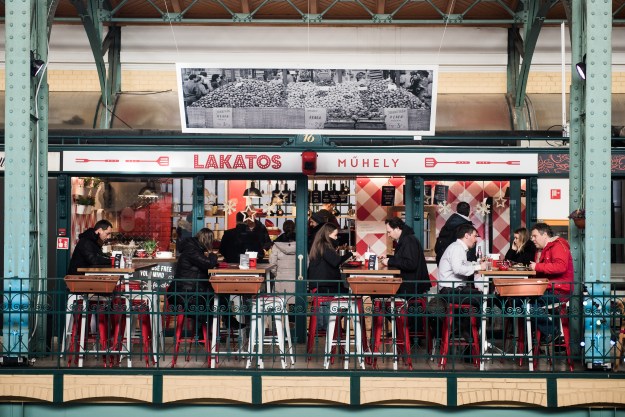
If you picked a Sunday for your perfect day, the market will be closed. A good, absolutely no-frills alternative is Retro Langos, a food stall nested in the nearby Arany János utca metro stop. Bufes, or “snack bars,” are a fading emblem of the Kadar era, named after Janos Kadar, Hungary’s longtime communist leader. Under his government Hungarians enjoyed more freedoms than their neighbors, including the option to run a small business, like a bufe.
Have the langos, Hungarian deep-fried flatbread, a favorite local street food. You might need some vocabulary for topping options: sajtos (cheese), tejfolos (creme fraiche), fokhagymas (garlic), or any variation thereof. The cheap sweet tea might spark nostalgia in those who went to school in Hungary, but others may prefer to sip a local beer instead.
At 1.8 million people, Hungary’s capital city is nearly seven times larger than its second-largest city. It was built to rival Vienna, the heart of the multiethnic Austro-Hungarian Empire. Signs of that rivalry remain visible all around the city.
The House of Hungarian Art Nouveau is just outside the Hold utca market. It is one of the many well-preserved examples of art nouveau architecture that make Budapest a great destination for lovers of the movement. The museum resembles an antiques shop, and the staff can be unpleasant; but the house and objects are worth the trip. At least stop by for a coffee.
A short walk away on Falk Miksa utca some of the city’s renowned antiques shops and galleries offer an ever-changing display of Hungarian art. Tamás Kieselbach’s gallery (closed 1 p.m. Saturday through Sunday) specializes in Hungarian painting and has regular exhibitions and seasonal auctions.
For flat whites and other serious coffee, try My Green Cup, across the ring road from Kieselbach Gallery.
In contrast to other European capitals, such as London, Budapest does not reserve the privilege of living in the central district for the extremely rich. But a tourism boom in the last decade and a more recent hike in property prices are driving many locals farther out, and the city is experiencing its own mild gentrification.
To get a flavor of Budapest’s recent success, head back east toward the center, this time away from the Danube. On the way stop at St. Stephen’s Basilica, which holds what is believed to be a portion of the mummified right hand of Hungary’s founder, King Stephen I. The basilica’s terrace offers panoramic views of the city if your day doesn’t allow a visit to the panoramic lookouts atop Buda’s hills.
Andrássy út (Avenue), the city’s most elegant thoroughfare, runs a mile and a half from the heart of Budapest to City Park. In the first section, up to Oktogon Square, look out for classical buildings, especially the State Opera. Now is your chance to ride on continental Europe’s oldest underground electrictrified line, built as part of an urban project to mark the millennial anniversary of nomadic Magyars settling in today’s Hungary.
The avenue is a gateway to the ever growing party district on neighboring streets. Turn down Kiraly utca, the next big street to the south.

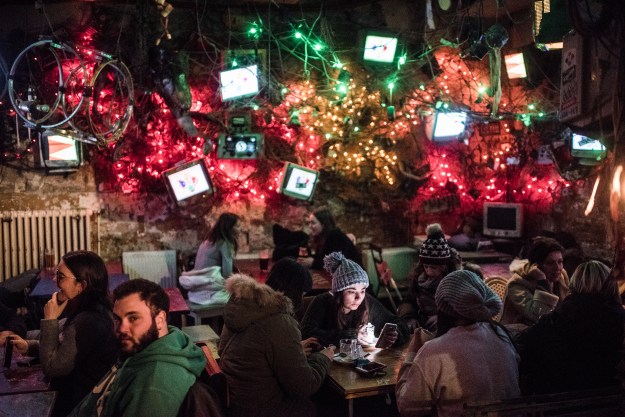
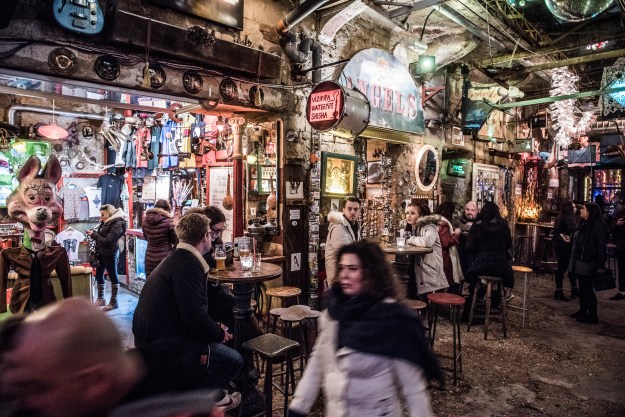
By the time you get to Szimpla Kert, on Kazinczy utca, it will be time for a fröccs. A popular summer drink, fröccs is the equivalent of a white or rosé wine spritzer, made of soda water and wine—but there are over a dozen types, of varying size and strength. (Nagyfröccs, two parts wine to one part soda, is a good option.)
Szimpla has come a long way from being a hangout for fröccs-sipping youth. Now it’s an internationally known party spot. It was the first romkocsma, or “ruin bar,” in Budapest, founded when some self-proclaimed artsy types with no experience in hospitality transformed a derelict building and its garden into a niche hangout for like-minded people. In addition to cheap fröccs, esoteric concerts, DJs, and film screenings are on offer to satisfy the Budapest youth’s hunger for innovation.
The colorful bric-a-brac decor and ad hoc atmosphere inspired dozens more romkocsma, not just in the old Jewish quarter but throughout the city.
Many credit Szimpla with sparking the entire party district, which has become a victim of its success, much like what happened in Berlin a few years before. Tourists, propelled by cheap flights and relatively inexpensive nights out, have residents mourning their formerly quiet nights, while local youth opt to explore new neighborhoods.
The debate over noise, beer, and bikes is growing louder, but local authorities have so far shied away from reining in the lucrative new phenomenon.
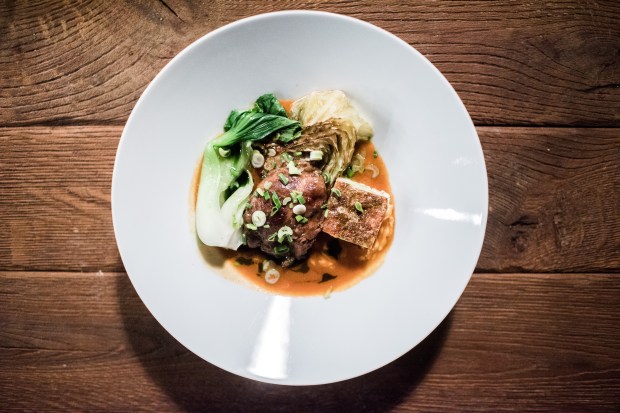
Another, quieter revolution has transformed the kitchens of some of Budapest’s restaurants, where dozens of chefs have taken to reimagining goulash—a soup, not a stew, in Hungary—and other deliciously heavy dishes typical of Central Europe. Using local products like wine or meat from furry Mangalitsa pigs, a rare breed that has been celebrated abroad, today’s chefs are cooking to critical acclaim. The rising stars of Hungarian cuisine seem unbeatable on one key point: great value for the money, especially that of Western purses.
A short walk from Szimpla Kert is Fricska, a bistro-styled basement that celebrates the cuisine of the early 20th century you saw at the House of Hungarian Art Nouveau. It’s right in the middle of the busy nightlife district but puts an ever changing selection of foods from the market on the table. Let the sommelier help you discover the best of Hungary’s vineyards during dinner (check times, closed Sundays.).
Sundays can be a chance to splurge at Salon Restaurant, back down the ring road. The restaurant is housed in a beautifully renovated, late-19th-century-New York-style palace, displaying more of the prewar atmosphere hinted at in your perfect morning.
Underneath Budapest is a network of hot springs that for centuries have supplied the city’s many Turkish-style bathhouses with warm, curative waters. Rudas, sitting by the Danube on the Buda side, has a cavernous variety of Turkish thermal baths, a modern swimming pool, and a rooftop hot tub. On Fridays and Saturdays it holds night hours from 10 p.m. till 4 a.m. and is a good place to wind down after a long day. Sit in the rooftop tub and soak in the views of Budapest by night.
An insider tip: The “sparties” at the famous Széchenyi baths attract a young crowd for nighttime pool parties, the opposite of winding down in Rudas. If you want to try Széchenyi, do so during the day.
